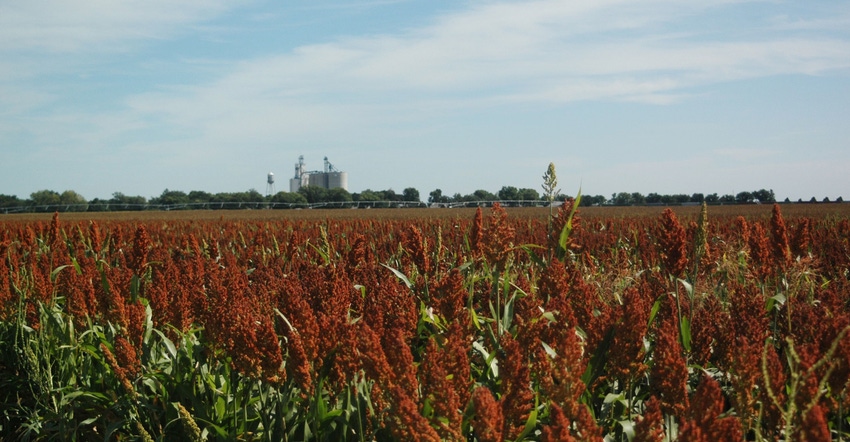
Sorghum saw a surge in acres last year — an increase of about 22.4% nationally — largely driven by the demand in China. In Nebraska, sorghum acres harvested for grain increased from 160,000 acres in 2014 to 240,000 in 2015, according to data from USDA's National Agricultural Statistics Service.
However, Mike Baker has been raising sorghum on his farm near Trenton for about 15 years. Acres have since dropped off, and one of the challenges in increasing sorghum acres is achieving higher yields. In the latest Nebraska Notebook, we visited with Baker on reaching higher yields in sorghum. As he puts it, "You have to put the effort and time into it, to look at it from all aspects of growing as a high-profiting, high-yielding crop."
This includes everything from weed control to fertility to hybrid selection.
"This year I was especially tickled pink," Baker adds. "I host a Nebraska Producers Association plot tour. We cracked the 150-bushel-per-acre mark, which was huge for me. Last year we were at 149, and this year we were at 152 in the top-yielding hybrid. I'm happy to show people on my farm that we're capable of having those kinds of dryland yields."
Del Ficke, who grows sorghum for grain and forage on his farm near Pleasant Dale, is a member of the National Leadership Sorghum Class 3. Earlier this year, Ficke visited USDA Agricultural Research Service's sorghum research facility in Lubbock, Texas, and Richardson Seeds near Vega, Texas, as part of the program.
"Richardson Seed in Vega, Texas, is working on a BMR [brown midrib] short-season sorghum. So you can harvest it, you can harvest it early, you can turn cattle in there quickly, and then you can get your cover crops in there," Ficke says. "So you're shortening those days, and still getting a really good crop, adding value to your operation through grazing, through potentially selling that sorghum into different markets."
Ficke notes the soil health benefits of sorghum, especially when used as a grazing tool — whether grazing forage sorghum or residue left behind after harvesting sorghum for grain.
"It really has a nice set of channels for that water to go down, especially if you have a good earthworm population," he says. "It is my absolute go-to crop for building soil and covering that soil. We put it on some really poor ground in the last few years, and we were able to see results pretty fast. You can see the change in the soil — how it looks, how it smells. It already starts to get that cottage cheese look that second or third year. I'm a firm believer that that's the sorghum part of it."
About the Author(s)
You May Also Like






